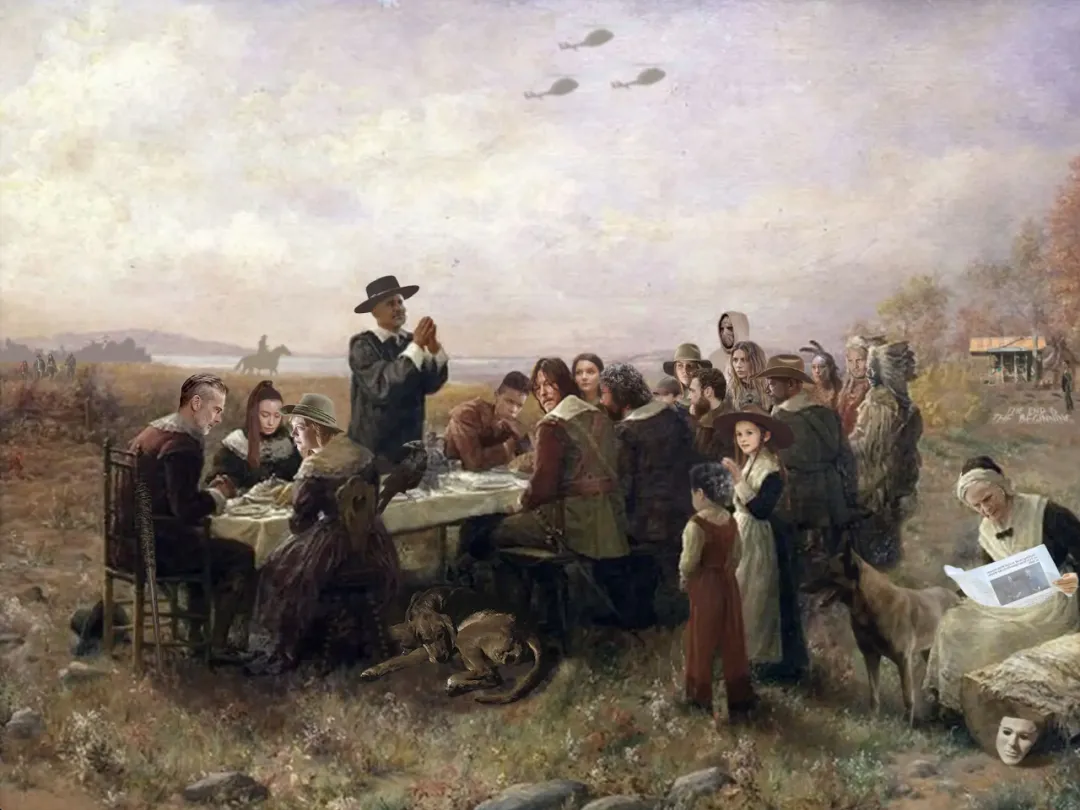
Unveiling the True Story of Thanksgiving: An Ancient Tale of Light and Darkness
Share
Thanksgiving Day, observed on the fourth Thursday of November every year, is an important Western traditional holiday.
On this day of gratitude, people go to church to give thanks, acknowledging God's loving mercy and boundless grace. It is a time for family and friends from near and far to gather around the dinner table, sharing food and moments of thankfulness.
However, this was not always the way Thanksgiving was celebrated. The holiday and its traditions have evolved — from the harvest feast shared by the Pilgrims and Wampanoag people in 1621, to patriotic and religious gatherings after the Civil War, and finally, to the modern holiday focused on sharing meals and connecting with loved ones.
Where did Thanksgiving truly come from? In this issue, we will begin with the story that dates back nearly five centuries, peeling back the layers of legend and mystery, tracing the real historical events, and reflecting on the origins, customs, and true meaning of Thanksgiving.

Thanksgiving's origin can be traced to a story of faith, miracles, light, and darkness over five centuries ago. On September 8, 1565, Spanish Admiral Don Pedro Menéndez de Avilés landed in Florida, kissing the cross held by Father Francisco Lopez and declaring the land to be under God’s dominion. In the presence of the local Timucua tribe, 800 settlers gathered for a Mass of thanksgiving for their safe arrival at the newly named St. Augustine. The Spanish shared a feast with the tribe, which included hardtack and hearty chickpea stew, accompanied by wine. "We sang praises to God and asked for His grace to continue," wrote French explorer René Laudonnière in his diary.

This event is considered by many historians to be the first "Thanksgiving," though others argue that the true Thanksgiving celebration occurred fifty years later.

In the late 16th and early 17th centuries, religious persecution in England drove the Puritans to seek a land where they could practice their faith freely. The recently discovered New World seemed to offer the freedom they sought, along with fertile land and a fresh start.

On July 22, 1620, the Pilgrims set sail from Delfshaven, Holland, aboard the Speedwell. After meeting up with the Mayflower in Southampton, England, they set off on August 6. But the Speedwell was damaged, and after several attempts to repair it, the Pilgrims abandoned the ship and continued their journey on the Mayflower, which left Southampton on September 6.

The Mayflower's passengers endured a tumultuous voyage across the North Atlantic. Captain Conrad Hanfler described the ship being tossed about by violent storms: "The ship was like a leaf in a torrent, tossed by waves that left us in misery." After two months at sea, the Mayflower finally reached Cape Cod on November 9, 1620. Despite the harsh conditions, all but one of the passengers survived the journey.

Upon reaching land, the Pilgrims, led by William Bradford, knelt in gratitude for their safe arrival, recounting how God had guided them through the treacherous journey and preserved them despite the dangers.
The first order of business was to establish a governance system for their new colony. Tensions had arisen between the Pilgrims and the ship's crew over how to proceed, but after much debate, they agreed to form a self-governing body. This led to the signing of the Mayflower Compact on November 11, 1620, which established a foundation for democracy and rule of law in the New World.

The Mayflower Compact became the first political covenant of the American colonies, marking a significant moment in the development of American democracy. It echoes earlier Christian covenants made in Europe, linking the settlers to God and each other.
However, the Pilgrims' survival in the harsh conditions of the New World was uncertain. Many perished in the brutal winter, but in the spring of 1621, the Wampanoag tribe, led by Massasoit, helped the Pilgrims by providing food and teaching them how to survive in their new environment.

In November 1621, the Pilgrims and their Native American allies gathered to celebrate the harvest with a three-day feast of thanksgiving. Edward Winslow, a Pilgrim chronicler, wrote that after the hunting party returned with five deer, they celebrated with Massasoit and his men. "Though life was not always so abundant, thanks to God’s mercy, we were far from lacking, and we wished to share our bounty."

The Pilgrims held another thanksgiving feast the following year to celebrate the end of a drought. From then on, each November, the Pilgrims continued to invite Native Americans to join them in giving thanks for the harvest.
As the years passed, Thanksgiving became an annual tradition in the colonies, though its meaning changed over time. After the turmoil of war, President George Washington issued the first Thanksgiving proclamation in 1789, urging citizens to give thanks for the end of the Revolutionary War and the ratification of the U.S. Constitution.

In 1863, during the Civil War, President Abraham Lincoln declared Thanksgiving a national holiday, setting it for the fourth Thursday in November. The holiday’s purpose was to thank God for the nation's blessings, even amid the nation's trials.
Today, Thanksgiving is a time to share food, give thanks for what we have, and gather with loved ones. Communities continue to serve those in need, reminding everyone of God’s mercy and human kindness.

Though the true origins of Thanksgiving may be forgotten by some, the core message remains: giving thanks to God for His grace, the love of family and friends, and all of life’s blessings.
For Immanuel, Hallelujah!

Psalm 50:23
"The one who offers thanksgiving as his sacrifice glorifies me; to the one who orders his way rightly I will show the salvation of God."




